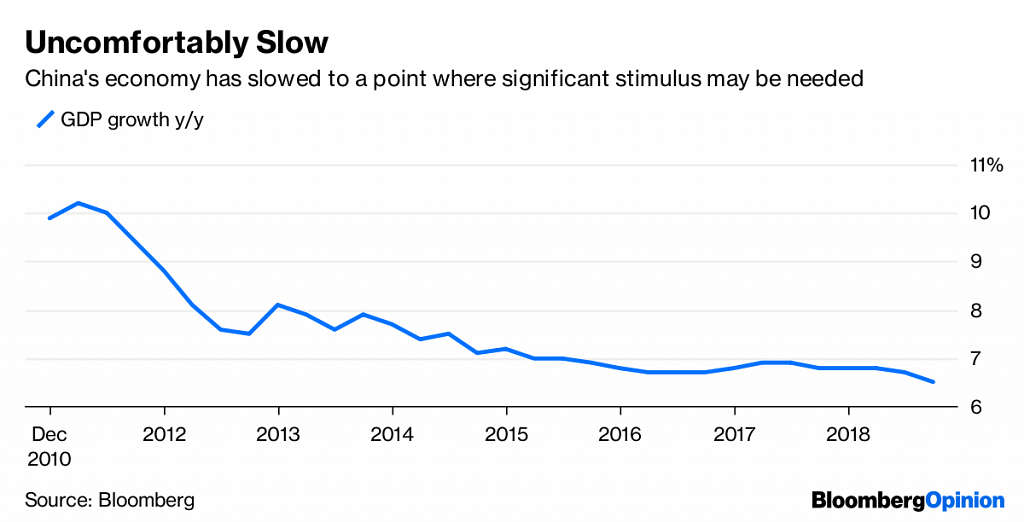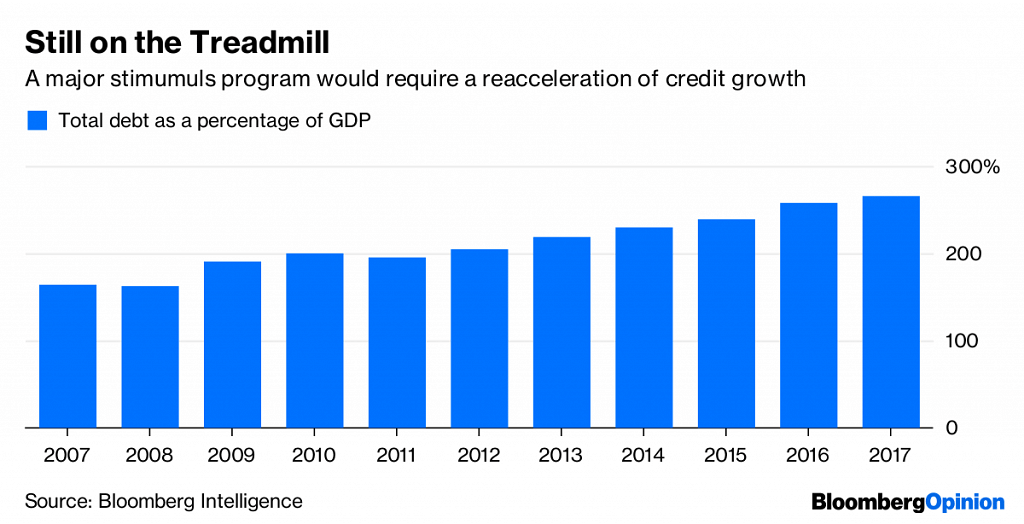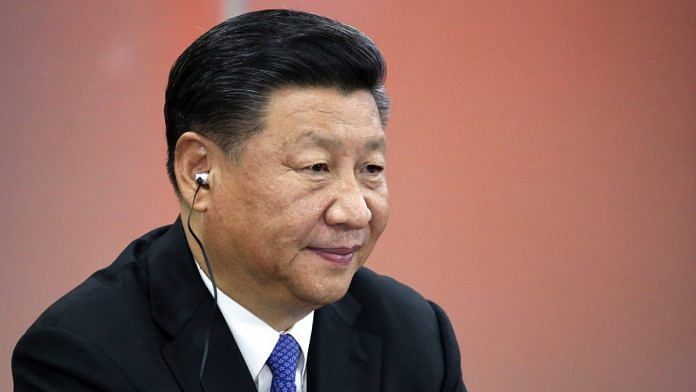China’s top leaders meet this week in Beijing to set economic policy objectives for the coming year. The central question is whether they will do what they want or what the country needs.
Clear evidence has emerged in the past couple of months that the Chinese economy is slowing to an uncomfortable degree. That’s raised expectations that the leadership will opt for significant stimulus at the Central Economic Work Conference, which Bloomberg News reported will be held from Dec. 19-21.
Pressure for stimulus revives the eternal question of whether to prioritize growth over deleveraging. Beijing has worked diligently to slow debt growth since President Xi Jinping was confirmed for a second term as general secretary of the Communist Party in October 2017. However, asset prices and real activity have slowed markedly. With car sales down 18 percent in November from a year earlier, a tepid package of moderate fiscal spending and tax cuts may be insufficient to drive a rebound.

Hopes are running high among Chinese investment bank analysts. Citic Securities Co. speculated that stimulus could reach as much as 14 trillion yuan ($2 trillion), while ING Groep NV estimated a figure of 9-10 trillion yuan. That would be equivalent to roughly 10-16 percent of current GDP — bigger than the package rolled out during the global financial crisis in 2008-09. On the other hand, commodities markets — the likeliest recipients of stimulus largess — are sluggish in price and volume terms heading into the policy gathering.
Bank research notes have bemoaned the lack of demand and fall-off in investment, referring to this as the “dark before the dawn” of post-conference announcements. We’ve already seen a trickle of potential shifts, such as a proposal to remove the policy bias against private companies. Beijing has also been revising public private partnership rules in the hope that they will unleash increased investment in infrastructure.
Analysts have focused, too, on the prospects for a cut in value-added sales taxes. This would provide a shot in the arm for households and retailers at a time when consumption has been sluggish following a smaller-than-anticipated 2018 tax cut. Chinese analysts have been speculating that VAT will be reduced to the low teens from the current rate on most goods of 16 percent.

The problem is that increased investment spending will require a re-acceleration of debt growth, while tax cuts will increase the public deficit. There has already been talk that China should increase its public deficit target to 3-5 percent from 3 percent. Cutting interest rates doesn’t appear to be an option that’s being widely considered, given the downward pressure this would have on the yuan and the lack of any direct boost to investment.Even amid this year’s deleveraging campaign, total debt growth will still outpace nominal GDP growth by about 1 percent.
Higher investment in infrastructure via PPP projects can only come primarily from over-indebted state-owned enterprises or local governments that already have a reputation for hiding debt levels, something highlighted as a major concern in the People’s Bank of China’s financial stability report.The reality is that the government cannot stimulate the economy to any appreciable degree while simultaneously continuing to slow debt growth. This puts Beijing in an uncomfortable position: keep taking the pain, or give in to the pressure and provide relief now? Opening the money spigot may alleviate near-term growth concerns, but at the cost of storing up bigger problems for the future.The years of enormous debt growth are catching up with China. We should know at the end of this week which way its leaders have decided to turn. – Bloomberg




Fortunately, Chinese leaders do not need to stand for elections. A lot of China’s growth since 2008 has been on steroids, unsustainable, not good for the long term health of the economy. On the liabilities side there is humongous debt. On the assets side, fifty million empty homes, excess capacity in industry and infrastructure. Too many high speed trains, expressways. President Trump’s trade war is adding to China’s pain. Even so, it would be prudent to keep letting hot air out of the balloon.